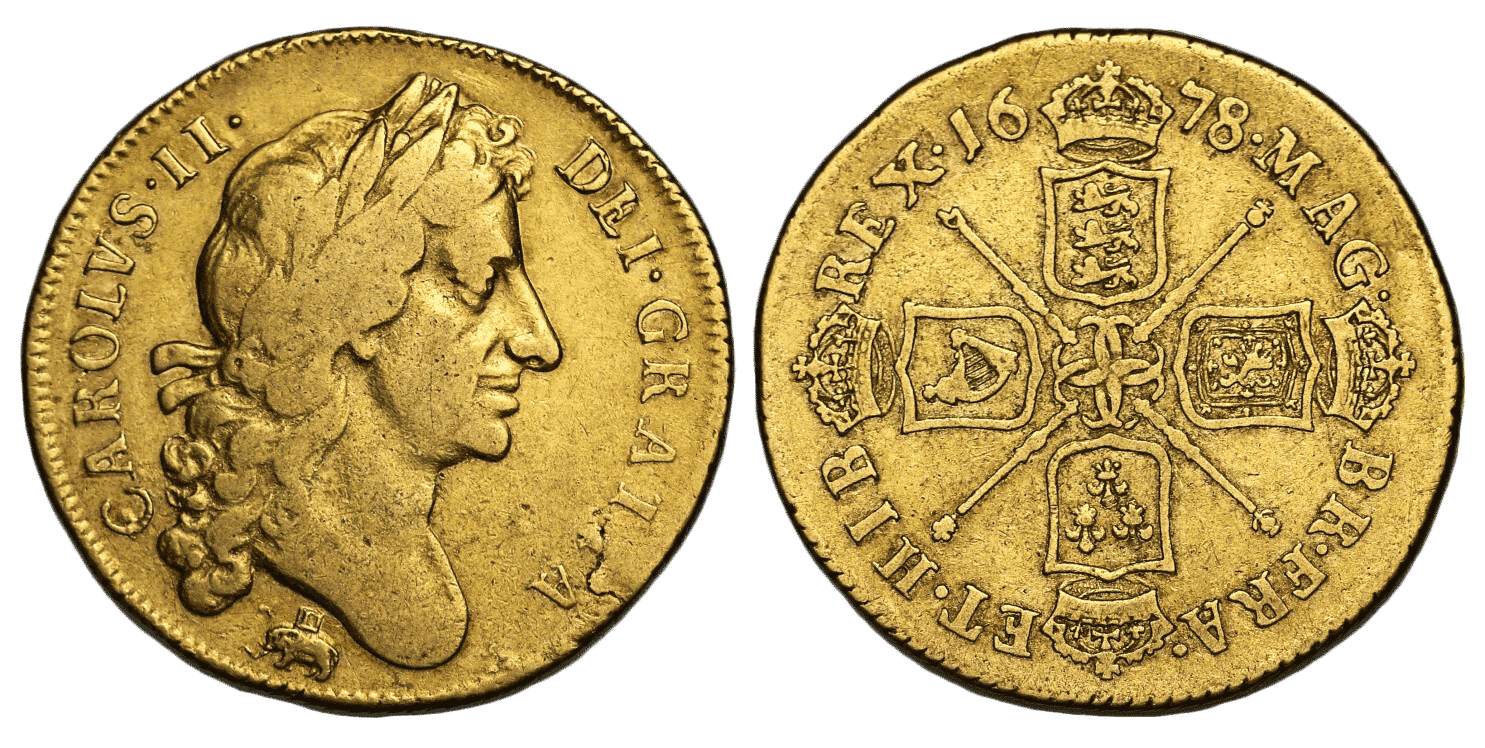Chapter 4
1514–1866, The Transatlantic Slave Trade
The Transatlantic Slave Trade was the largest forced migration of people in world history. Profits from the sale of enslaved humans and their labor laid the economic foundation for Western Europe, the Caribbean, and the Americas. The human cost was the immense physical and psychological toll on the enslaved. Their lives were embedded in every coin that changed hands, each spoonful of sugar stirred into a cup of tea, each puff of a pipe, and every bite of rice.
Negroes . . . are a perishable Commodity, when you have an opportunity . . . dispose of them for gold.
Humphrey Morice, 1730
Blood Money: Two-Guinea Coin
Two-Guinea Coin
The Guinea coin, produced in England, was named for Guinea on the west coast of Africa. The trade in gold and enslaved people secured the raw material for the coin and the profits behind it. The elephant and the crown represented the Royal African Company, which briefly held the British trade monopoly in Africa.
European Currencies
Portuguese coin
These currencies were widely exchanged over 440 years of the Transatlantic Slave Trade. They declared the sovereignty and wealth of the royal families and nations they represented, all of which engaged in and profited from the sale of human beings.
African Currencies
African Hoe Currency
Katanga Cross
African leaders were involved in the slave trade to avoid enslavement, remove rivals or criminals, pay debts, or for profit. These artifacts, including the Hoe Blade money and the Katanga Cross, were all African currencies.
Passing on Property
Individuals and families built legacies of wealth from the slave trade and the plantation economy. This document is a record of valuable assets including land and enslaved African people passed from one generation to the next.
Deed of Sale between William Walker and John and Joan Gunston, including real and human property
The Industry of Slavery
Reflections on the Middle Passage are evoked by this folk-art model of a slave ship. J. Wallace, a writer in Liverpool, England, stated in 1795, “Almost everyman in Liverpool is a merchant . . . small vessels are fitted out by attorneys, drapers, ropers, grocers, tallow chandlers.”
Slave Ship Model
Fox's Wages Book
Fox’s Wages Book, February 1775
Many working-class European people also risked their lives for better wages by working on slave ships. The wages of Crew members' whom served on the British slave ship Fox were recorded in this book, which indicates several crew members died by suicide or ran away.
The Invention of the Western Atlantic Plantation
Cutting the Sugar Cane, 1823
Sugar Cane Cutter
The land and climate of the Caribbean and South America proved suitable for growing cash crops on vast tracts of land—Atlantic World plantations. The availability of enslaved African people made this environment immensely profitable. The forced labor of enslaved African people served to clear and cultivate the land for sugar and other cash crops. Plantation work was particularly brutal, and enslaved Black people were considered expendable. Returns from the commodities produced by enslaved people were so great that it was profitable to work African men, women and children to death.
Barbados Penny, 1788
Barbados Penny, front
Barbados Penny, back
Many enslavers produced plantation tokens unique to their properties. This token features the bust of an enslaved African man and the phrase "I Serve." Currencies, both local and national, displayed images that provided a visual telling of the acceptance of slavery and the slave trade and the subservient role of Black people.
Violence: An Everyday Reality
Flogging of Joanna in Suriname
Cat-o-nine tails Whip
In the fields of a sugar or rice plantation, the labor was harsh and dangerous. The violence of overseers was another threat to the lives of enslaved people. As one Jamaican slaveholder claimed in 1803, "A slave . . . must necessarily move by the will of another . . . hence the necessity of terror to coerce his obedience."
